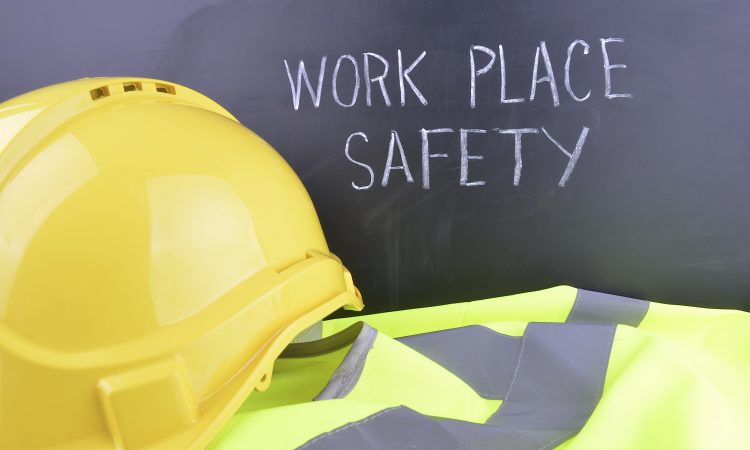Many businesses either don’t understand OSHA’s Process Safety Management standard (PSM), or they don’t realize it applies to them. Once you have determined you have a covered process or on-site storage, handling and/or moving of a highly hazardous chemical (defined by 29 CFR 1910.119) at or above the threshold quantity set by OSHA, you must develop a PSM program compliant with OSHA’s specific requirements. There are 14 elements that must be implemented in such a program, and this post will cover the basics of those…
Continue reading...
OSHA Inspections
In any major city (and, actually, everywhere), construction is a way of life. Cities continuously expand, renovate, and build. With more job sites has come more scrutiny and oversight from OSHA. OSHA’s stated mission includes to “assure safe and healthy working conditions for working men and women by setting and enforcing standards.” When employers fail to abide by those standards, they face penalties – and, in 2019, the maximum penalties again went up.
OSHA Penalties
In fact, since 2015, the maximum penalty amounts have almost…
Continue reading...
Continue reading...
In the final part of this four-part series, we examine the fourth element an employer must establish to successfully raise the “unpreventable employee misconduct” affirmative defense in response to an OSHA citation: that the employer effectively enforces its safety rules upon discovering any violations. Simply stated, this last element requires that an employer discipline its employees for violating any company safety rules. As with the other elements of this affirmative defense, documentation is critical.
The fourth element of this defense goes to the very core…
Continue reading...
Continue reading...
In part three of this four-part series addressing the “Unpreventable Employee Misconduct” defense, we will examine the third element an employer must prove to successfully defend against an OSHA citation: that the employer insisted on compliance and had methods of discovering violations of its rules, even though it did not know about the specific violation.
Similar to all other elements of this defense, the concept is relatively simple: the employer must insist on safety compliance and have established methods for discovering violations of OSHA violations,…
Continue reading...
Continue reading...
On May 12, 2016, OSHA caused confusion and concern amongst employers in the preamble to 29 C.F.R. § 1904.35(b)(1)(iv) reporting requirements. The preamble appeared a prohibition, at the very least discouragement, of post-incident drug testing or policies. On October 11, 2018, OSHA provided a memorandum to clarify the Department’s position on post-incident drug testing. In particular, OSHA advises that
[t]he Department believes that many employers who implement safety incentive programs and/or conduct post-incident drug testing do so to promote workplace safety and health. In addition,…
Continue reading...
Continue reading...
OSHA reinstated the Site Specific Targeting Program (SST) effective October 16, 2018. The SST, OSHA’s main site-specific targeting inspection plan for non-construction workplaces that have 20 or more employees, will be based on the 300A data associated with a 2017 rule published by the US Department of Labor, requiring certain employers to publicly E-File injury and illness data, beginning in calendar year 2016.
Prior to 2014, OSHA’s SST program was based on information collected in connection with the OSHA Data Initiative (ODI). The OSHA Data…
Continue reading...
Continue reading...
In part two of this four-part series addressing the “unpreventable employee misconduct” defense, we will examine the second element an employer must prove to successfully defend against an OSHA citation: that the employer effectively communicated a rule, which, if followed, would have prevented the violation.
The idea behind this element is simple: the employer must be able to show that the employee whose conduct was in violation of the rule had previously been told about the rule. However, proving that the communication (1) occurred and…
Continue reading...
Continue reading...
What if one or your workers – who should and does know better – violates an OSHA standard? Shouldn’t an employer be able to defend itself from the violation even when there is no dispute that the underlying conduct occurred? The answer is yes, provided the four elements of the “unpreventable employee misconduct” defense are met.
Unpreventable employee misconduct, an affirmative defense, is often raised by employers in OSHA enforcement actions. Thus, while OSHA bears the burden of proving a violation, the employer bears the…
Continue reading...
Continue reading...
OSHA penalties can be costly. In fact, a single “repeat” or “willful” violation can result in a penalty of $126,749. And, if you have multiple violations, that number can increase significantly. This article addresses measures any employer can implement to minimize the risk of costly penalties while—at the same time—promote the most important goal which is to provide a safe work environment for employees.
Perform a Self-Assessment
The first step is to take an in-depth look at your organization and assess how you are doing…
Continue reading...
The first step is to take an in-depth look at your organization and assess how you are doing…
Continue reading...
When it comes to OSHA inspections, preparation is critical. Figuring out what to do (and who should do it) only after an inspector arrives on site puts employers at an immediate—and often irreversible—disadvantage. Consider implementing these OSHA inspection best practices now, before a proverbial “knock on the door.”
Fourth Amendment Rights
Employers—just like people on the street and in their homes—are entitled to Fourth Amendment protection against unreasonable searches and seizures. An OSHA inspector therefore needs one of two things to proceed with an inspection:…
Continue reading...
Continue reading...













